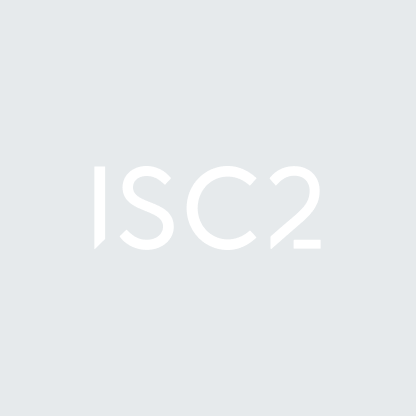In a constantly shifting world, where risks and opportunities evolve every single day, businesses are adapting to these changes by adopting cloud environments and mitigating data to these platforms. During this transformational effort, organizations are struggling to support and protect “hybrid” environments, where data reside at both on-premises and cloud infrastructure.
The principles of data protection are the same whether your data is stored in a traditional, on-premises data center or in a cloud environment. What is different is the way that you apply those principles. This is where traditional security differs from cloud security. Moving data to the cloud introduces new cybersecurity risks, challenges, and changes to the threat surface. This novelty requires a new approach to data security.
Traditional security controls are not adequate to mitigate and protect against the new threats in cloud environments. Big data, containers, microservices, elastic scalability, the new security skills required, and compliance and regulatory requirements add to the complexity of cloud security. Understanding the differences between cloud security and traditional security is key to finding the right security solution.
What Is Cloud Security?
Cloud security is the protection of data, applications, and infrastructures involved in cloud computing. The foundational principles and many aspects of security for cloud environments are the same as for any on-premises IT architecture.
Besides the foundational principles, the same security concerns affect both on-premises and cloud-based systems: unauthorized data exposure and leaks, weak access controls, susceptibility to attacks, and availability disruptions.
Like any computing environment, cloud security involves establishing and maintaining adequate controls and countermeasures to:
- Protect data and systems.
- Continuous monitor the security status.
- Detect and respond to anomalies and abnormalities.
- Respond and recover from unexpected events or security incidents.
Why Is Cloud Security Important?
Security threats are constantly evolving, and cyber criminals are becoming more advanced. In fact, with more and more data being stored in the cloud, attackers have turned their attention to the cloud. Establishing and sustaining a robust and effective cloud security posture presents many benefits to organizations:
Centralized security: Cloud-based environments include numerous devices and endpoints that at times, can be difficult to manage. Effective cloud security can centralize endpoints protection, offering a unified solution to devices management.
Cost effectiveness: Securing cloud storage results in eliminating the need to invest in a dedicated, on-premises hardware solution, reducing capital expenditure, and administrative overheads.
Optimized orchestration: A centralized, automated cloud security policy alleviates security teams from manual security processes. Security management takes place centrally and covers all cloud assets.
Reliable availability: Effective cloud security safeguards the benefits offered by cloud computing platforms. Security becomes synonymous with availability and reliability.
How Is Cloud Security Different From Traditional Security?
The problem with cloud security is that it is an abstract term. How can you secure something that you cannot see, that exists somewhere between your corporate premises and the clouds? However, if we could simplify cloud security, we could say that it is just good ol’ IT security.
The key difference is that cloud environments are dynamic, while legacy data centers are static. Based on this perception, it is easier to understand the differences between cloud security and traditional security.
Blurred Perimeters
Traditionally, we used to think of IT security like defending a castle. Traditional environments usually control access to the castle using a perimeter security model. This is not the case with cloud environments.
Corporate perimeters are dissolving, blurred. In addition, cloud assets are highly connected, making it easier for traffic to bypass traditional perimeter defenses. Insecure application programming interfaces (APIs), weak identity and access management, account impersonation, and malicious insiders pose credible threats to the system and data. Preventing unauthorized access in the cloud requires shifting to an identity-centric approach to protect the data. It requires also to always encrypt data, at rest and in transit. Security needs to be built into all levels.
Cloud Is About Software
Traditional data servers were about hardware. On the other hand, cloud refers to the hosted resources delivered via software. Cloud computing environments and data being stored and processed in the cloud are dynamic, scalable, and portable. Cloud security controls need to respond to the dynamic and elastic nature of cloud workloads, either through encryption or through APIs and cloud management tools. This approach will help to protect cloud environments from system disruption and data loss.
Sophisticated Threat Landscape
Sophisticated threats are disrupting the availability and reliability of the cloud. Advanced Persistent Threats (APTs) and software supply chain attacks are designed to bypass defenses by targeting and exploiting vulnerabilities in the computing stack. Data breaches can result in unauthorized information disclosure and data tampering. While there isn’t a single panacea to these threats, being vigilant and applying due diligence are the best cloud security practices to help you evolve with the changing threat landscape.
What Is The Impact On Cloud Security Professionals?
While adopting cloud platforms is about outsourcing computing infrastructure, you cannot outsource data security. Cloud security professionals cannot sit back and relax because of two words: Shared Responsibility.
Security of data, applications, and services in the cloud is the customer’s sole responsibility. In the same way you cannot outsource fines for data breaches, you cannot outsource the cloud security responsibility. The responsibilities associated with cloud security involve issues such as:
- Using and maintaining a trusted baseline of software
- Understanding regulatory compliance requirements, such as GDPR, PCI DSS, HIPAA, and CCPA.
- Managing and governing asset lifecycle.
- Ensuring portability of data across cloud platforms.
- Continuous monitoring of all resources across multiple cloud environments.
- Ensuring continuous professional development to keep up with technology developments and emerging threats.
How The CCSP Certification Can Help You Succeed
The ISC2 Certified Cloud Security Professional (CCSP) is the answer to all your concerns. CCSP is the benchmark of cloud security certifications and is repeatedly recognized as the most valued and well-rounded cloud security certification.
CCSP is a vendor-agnostic certification that ensures that certified practitioners have the security knowledge to successfully secure any cloud environment. It is CCSP’s unique criteria that has elevated it to a standard that has allowed it to be identified as the premier cloud security certification, providing an advantage in an increasingly competitive corporate landscape.
Attaining CCSP certification shows you have the advanced technical skills and knowledge to design, manage and secure data, applications, and infrastructure in the cloud using best practices, policies, and procedures established by the cybersecurity experts at ISC2.
To learn more about how the CCSP credential can help you gain expertise and advance your career, download our white paper Cloud Security Skills Can Take Your Career to Infinity (And Beyond).


